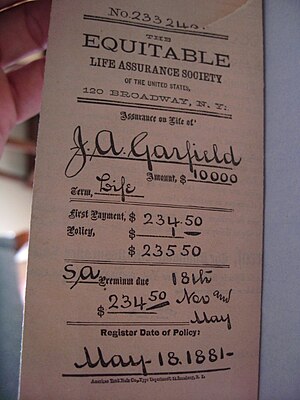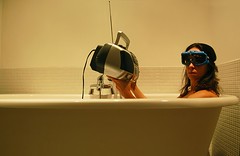- RT @ScottATaylor: Get a Daily Summary of Your Friends’ Twitter Activity [FREE INVITES] http://bit.ly/4v9o7b #
- Woo! Class is over and the girls are making me cookies. Life is good. #
- RT @susantiner: RT @LenPenzo Tip of the Day: Never, under any circumstances, take a sleeping pill and a laxative on the same night. #
- RT @ScottATaylor: Some of the United States’ most surprising statistics http://ff.im/-cPzMD #
- RT @glassyeyes: 39DollarGlasses extends/EXPANDS disc. to $20/pair for the REST OF THE YEAR! http://is.gd/5lvmLThis is big news! Please RT! #
- @LenPenzo @SusanTiner I couldn’t help it. That kicked over the giggle box. in reply to LenPenzo #
- RT @copyblogger: You’ll never get there, because “there” keeps moving. Appreciate where you’re at, right now. #
- Why am I expected to answer the phone, strictly because it’s ringing? #
- RT: @WellHeeledBlog: Carnival of Personal Finance #235: Cinderella Edition http://bit.ly/7p4GNe #
- 10 Things to do on a Cheap Vacation. https://liverealnow.net/aOEW #
- RT this for chance to win $250 @WiseBread http://bit.ly/4t0sDu #
- [Read more…] about Twitter Weekly Updates for 2009-12-19
Work at Home Scams
The idea of working from home is certainly appealing. You get to set your own hours, sleep in some days, and be there when the kids get home from school. You can be there when the packages get delivered and let the dog out before it’s too late. Who doesn’t see the attraction?
Unfortunately, when something is so enticing, there will always be predators looking to take advantage of the dreams of others. They dangle the “be your own boss” bait and reel in the people who their wishes overrule their judgment.
The ads are hard to resist. “Make $2800 per month without leaving your home!” or “Stuff envelopes in your home for $1 per envelopes.” I cases like these, the old saw tends to hold true: If it sounds too good to be true, it probably is.
Common work-at-home scams include:
Medical Billing
For only $499.99, you can purchase a “business opportunity”. A lot of medical bill is actually done on paper so there is very real market for medical billing and processing. Unfortunately for the respondents to these ads, the vast majority of this market is already taken by large companies with huge marketing budgets. Finding enough customer to generate enough revenue to recover your investment is almost impossible, but you’ll never see that in an ad.
Envelope Stuffing
You answer an ad in the paper, sending $29.95 for a packet that will instruct you in the fine art of stuffing envelopes for $1 each. When you get the information, you find out it is a letter instructing you to place an ad in the papers stating “Stuff Envelopes for $1 Each. $29.95 for Information.” This forces you to become the scammer, just to recover your costs. Bad you.
Assembly or Craft Work
This one actually sounds like a business. You invest in–for example–a sign-making machine for $1500. The selling company promises to buy a quota of signs from you each month. After you buy the equipment and materials you spend countless hours making the product only to find out that either a) the company has disappeared or b) their undefined “Quality Standards” has rejected the work. Nothing is ever up to standards.
That’s not to say there aren’t legitimate opportunities to make money at home. Bob at Christian Personal Finance recently listed 24 legitimate home-based businesses, including blogging, eBay selling, wedding planning, car mechanic, and mobile oil changes.
Are you exploring any home-based business opportunities?
New Debt
For the first time in 2 years(almost to the day), I am acquiring new debt that I can’t afford to pay off immediately. On a credit card.
Last Thursday, my son entered vision therapy. He has what is commonly known as a “lazy eye”, but is more properly called a “wandering eye”. His eyes don’t always lock on to whatever he is looking at. Instead, one of his eyes will (occasionally, but not always) drift to the side and shut off. His brain doesn’t interpret the signals from that eye.
We had two sessions of tests to diagnose the specific problems: $350.
We will have 28 weekly sessions of therapy @ $140 per session: $3920
There is an equipment fee: $85
That’s a total of $4355 over the next 7 months.
Insurance covers some of it, but the therapist is out-of-network, so it’s “pay first, get reimbursed later from the insurance company”. If we pay up front, we get 1 session free, bringing the price to $4215, minus insurance.
I have a health savings account that I have been trying to max out to cover this, to make my payments all pre-tax. I haven’t been able to get enough in there, yet. In fact, since I don’t have my kids on my insurance, my maximum HSA contribution is $3050.
Since finding out that vision therapy was going to be necessary, I have managed to save $1000 in cash, and about $1500 in my HSA. That’s $2500 of a $4215 bill, leaving $1715 that I still need to be able to cover.
Here is my plan:
We’re charging the entire $4215 at 11.9% interest on a card with a 2% travel rewards program. This will give me $84.30 worth of travel rewards good for reimbursing any travel expenses.
I will immediately pay off $1000 from cash savings.
I will also immediately file for an insurance reimbursement, which will cover 80% – $500, or $2972 minus a bit. Our insurance got a waiver on the pseudo-wonderful healthcare fraud act on the grounds that the plan sucks so bad that it would cost too much to comply with the law. No joke. I’m expecting about a $2500 reimbursement, and I have no idea how long that takes.
In 6 weeks, when I have maxed out my HSA contributions for the year, I will file for an HSA reimbursement for about $2500, leaving about $500 to cover some medical costs for the rest of the year. Vision therapy doesn’t count against my deductible, since my kids are on my wife’s insurance plan.
Starting in June, my debt snowball will no longer be going to max out my HSA and will instead go straight to this card, to finish paying it off as quickly as possible. That’s $750 per month.
Any money from any side work will also go towards this bill, but I don’t budget for that, because it isn’t reliable money.
The projected results:
$3215 on the credit card for 6 weeks @ 11.9% = $50 in interest payments.
After the HSA reimbursement, there will be $715 left to pay, which will be paid off in June for another $10 in interest.
When we get the insurance reimbursement, we’ll replenish the medical bill account, to start getting ready for the kid’s braces next year. We’ll drop $1500 into that account and use the remaining $1000 as a debt snowball payment.
We’ll end up paying $60 in interest to save $140 in therapy costs, so it’s good math, but I hate the idea of racking up another credit card bill. I could drop the interest costs a bit by raiding my emergency fund, but that still wouldn’t cover it all, and it would leave me with very little left for an actual emergency. I could raid the emergency fund for half of its value($700), and reduce the initial interest paid to $25 and the total interest paid to about $40, then use the $1000 leftover from the insurance reimbursement to replace my emergency fund.
Twitter Weekly Updates for 2010-04-24
- Watching Gamers:Dorkness Rising #
- Charisma? Weee! #
- Tweeting a dork movie? I'm a bit of a geek. #
- We just met and the first thing you do, after boinking a stranger in the presence of the king, is to murder a peasant? #
- Every movie needs a PvN interlude. #
- Everything's better with pirates. #
- Waffles? Recognize. #
- The Spatula of Purity shall scramble the eggs of your malfeasance. #
- Checkout clerks licking their fingers to separate bags or count change is gross. #
- Watching Sparkles the Vampire, Part 2: Bella's Moodswing. #twilight #
- @penfed was a waste of money. $20 down the drain to join, wouldn't give a worthwhile limit, so I can't transfer a balance. #
- @JAlanGrey It's pretty lame. The first one was ok. This one didn't improve on the original. in reply to JAlanGrey #
- RT @tferriss: Are you taking snake oil? Beautiful data visualization of scientific evidence for popular supplements: http://ping.fm/pqaDi #
- Don't need more shelves, more storage, more organization. Just need less stuff. #
- @BeatingBroke is hosting the Festival of Frugality #226 http://su.pr/80Osvn #
- RT @tferriss: Cool. RT @cjbruce link directly to a time in a YouTube video by adding #t 2m50s to end of the URL (change the time). #
- RT @tferriss: From learning shorthand to fast mental math – The Mentat Wiki: http://ping.fm/fFbhJ #
- RT @wisebread: How rich are you? Check out this list (It may shock you!!!) http://www.globalrichlist.com/ #
- RT @tferriss: RT @aysegul_c free alternative to RosettS: livemocha.com for classes, forvo.com for pronunc., lang8.com for writing correction #
- Childish isn't an insult. http://su.pr/ABUziY #
- Canceled the Dish tonight. #
Kim Kardashian’s Baby Has It Easy: How Much Does It Cost To Have a Baby?
If you have not heard that Kim Kardashian has officially given birth to baby North West with rapper boyfriend Kanye West, you have probably been hiding under a rock.

Baby North was welcomed to the world several weeks early on June 15, and since then has been showered with thousands of dollars in gifts from family and celebrity friends like Beyonce and Jay-Z. Saying that baby North will never want for anything materialistic is putting it lightly, but how much does it truly cost for the average person to have a baby in today’s modern age? Here is a brief breakdown that will help you start saving before you start planning to have your very own precious baby.
The Hospital Bills and Doctor Visit Costs
While you probably will not have to pay for your prenatal and post-natal care out-of-pocket, the average insurance plan does come with out-of-pocket percentages that you must pay when you are hospitalized or when you visit the doctor. If you did not account for the medical bills when you were budgeting for baby, this is the first financial roadblock you will run into. You might not give labor in a luxurious suite like Kardashian, but it will feel like you did when you get the bill. Most parents report spending about $2000 out-of-pocket for the delivery and the hospital stay. This does not include the cost for co-pays for doctor visits. If you do not have insurance, expect to spend about $10,000 for a vaginal birth or $16,000 for a cesarean section, assuming there are no complications.
The Costs of Caring for a Newborn Baby
You will get some great gifts at your baby shower, but you still will spend money on the necessities. If you are not lucky enough to get $7000 gifts from your friends like Kanye and Kim, you should allot a budget for the big items first, and the basic daily necessities second. You will need a crib, a stroller, a car seat, and eventually a highchair, but these items are not as expensive as you might think. If you can pass up the designer brands, you can find great deals at consignment stores or retailers. Thrifty shoppers can purchase the must-haves like car seats, baby monitors, changing tables, cribs and strollers for $450 or less.
In addition to the immediate necessities, you will incur other regular expenses for diapers, clothing, wipes and childcare. Kim and Kanye may be guilty of buying $50 onesies, but you do not have to have custom Gucci clothing made for your little one. Remember that your baby will grow out of their infant clothing in a month or less. Accept hand-me-downs, and you can save quite a bit of money. Diapers, on the other hand, are a re-occurring expense that will not go away. Expect to spend at least $80 to $100 per month on diapers and wipes until your baby is potty trained. If you are not breastfeeding, allot about $100 per month for formula until your baby advances to baby food.
Kim and Kanye may have plenty of money to give Baby North whatever her heart desires, but new parents can raise a baby on a reasonable budget. It is difficult to put an actual number on how much it costs to have a baby, but being a parent is not cheap. Keep the fact in mind that love and affection is much more valuable than the material things. Consider the real costs of being a parent, and this includes lifestyle costs and monetary costs.
Related articles
Protection for your Loved Ones

This is a guest post.
Life cover insurance acts as a safety net to pay for a family’s expenses should a wage earner become critically ill or die prematurely. Life cover includes life insurance as well as disability, critical illness, mortgage and income protection insurance policies.
Importance of life cover insurance
In most families, at least one adult is a wage earner and uses their income to pay for necessities such as food, clothing and rent or mortgage. If the wage earner becomes disabled, too ill to work, or dies, life cover insurance can pay for these expenses.
Stay-at-home parents provide valuable, though unpaid, services to the family. Without that person, the family would have to pay for childcare, household upkeep, errand running, and every other chore the stay-at-home parent did. If the stay-at-home parent has life insurance, these expenses can be covered.
Life cover insurance can pay off mortgages and education loans.
Live cover insurance policies will pay funeral costs, which can be substantial.
Family owned businesses can be insured and protected if the owner dies.
Objections
Life cover insurance is too expensive.
Insurance companies have plans to suit every budget and life circumstance. While young and healthy adults will generally receive the most affordable policies, older adults have plenty of reasonably priced options as well.
Disability or severe illness is unlikely.
Actually, 32% of men and 25% of women, ages 40 to 70, will experience a critical illness or disability. http://www.healthinsuranceguide.co.uk/statistics_mainbody.asp
Discussing disability or death is awkward and uncomfortable.
Agreed, but avoiding the topic puts loved ones into economic jeopardy. Without the wage earner’s life cover, a family could lose their home and have to lower their standard of living.
Variety of life cover insurances
Life Insurance
Term insurance is a protection policy, paid for during a specific time period (term), and is active during that time only. Permanent, whole, variable, universal and universal variable life insurance policies all are investment policies. They combine a death benefit (the amount paid out when the insured person dies) with an investment account. Licensed and experienced life insurance agents can help individuals make the best choice for their life situation.
Critical Illness/Disability Insurance
This type of insurance pays for living expenses if a person is diagnosed with a serious illness or disabled and can no longer work.
Mortgage Insurance
This is paid when the mortgage owner dies. This could help prevent the surviving family from having to sell the home.
The time to buy life cover insurance is now!
A 2010 survey (http://www.prnewswire.com/news-releases/ownership-of-individual-life-insurance-falls-to-50-year-low-limra-reports-101789323.html) stated that individual life insurance ownership was at a 50 year low in the United States. An estimated 35 million (30% of households) Americans do not have life insurance, and 11 million of these households have children under 18. Already living paycheck to paycheck, any debilitating injury or death of a wage earning adult could spell financial disaster to the family. Buying life cover insurance is a vital part of caring for loved ones. Just as a wage earner provides a home, food and daily necessities for their family, life cover insurance can take over and provide for the family if the wage earner unable to do so.






